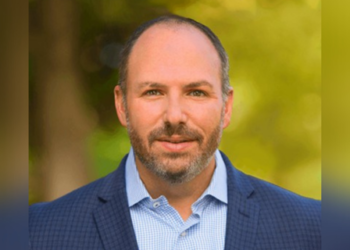The challenges and trends facing the industry are forcing some insurers to think about “where to play.” This will result in a rebalancing of portfolios of businesses and a review capital allocation, in particular through M&A and asset disposals.
A recent McKinsey report zoomed in on this pressing question: Where should insurers be active — in terms of geography, lines of business and position in the value chain — to renew value creation and themselves?
What follows are excepts from the report.
The pandemic years seem to herald a new phase for the insurance industry. Several players are already changing and refocusing their footprint and business model — in effect, rebalancing their portfolio of activities and reviewing their capital allocation .particularly through M&A and asset disposals.
Indeed, a new premise for industry transformation may be emerging as carriers realize that the changes unleashed by the COVID-19 crisis will raise the stakes of competition while also complicating the macroeconomic environment, especially through inflation and interest-rate evolution. Carriers have to invest quickly and massively in technology, data and analytics capabilities, digital skills, customer experience and compliance capabilities just to keep pace in the changing environment. Those investments won’t be easy to fund in an industry with some disappointed shareholders. And they carry an opportunity cost: As carriers with diversified portfolios have many mouths to feed, some areas will be shortchanged.
Insurers are realizing that the costs of complexity (whether in the product portfolio, client experience, geographical footprint, lines of business, or position in the value chain) are simply too high. More carriers are concluding that it is better to simplify their operating model, cede some benefits of diversification, and invest the proceeds to gain scale where they intend to operate.
Thus, many carriers (though not all; some are still pursuing global scale) are shedding subscale, noncore businesses, seeking profitability in their core activities and markets, and gaining the ability to make bolder, more focused investments. Many carriers believe they will be able to renew value creation by offloading legacy liabilities to owners better positioned to manage them and by refocusing their business model.
Financial buyers have also entered the arena. Private equity firms are rolling up insurance and annuities assets — typically sold by public carriers — to secure permanent capital for their investment arms. And some global insurers have rethought their geographic footprint.
The overall pace of M&A activity among insurers and investors is likely to increase, though we anticipate more activity among life insurers than P&C. For life insurers, industry consolidation is largely the result of macro challenges including sustained low interest rates and others that make it difficult to achieve an attractive, sustainable return on equity (ROE). P&C insurers also face headwinds from low interest rates, although less so than their life insurance counterparts, as well as an overabundance of carriers in many businesses, resulting in downward pressure on ROE.
As the industry continues to restructure, making a series of small deals could be a bridge to a programmatic approach to acquisitions for P&C and life insurers. McKinsey research over the past 20 years has consistently shown that a programmatic approach increases carriers’ odds of success as well as their potential for long-term independence — if they can resist the allure of really large acquisitions. Across industries, programmatic M&A has worked best when companies build dedicated teams and carefully design processes based on best practices across all stages of the M&A process, from strategy and sourcing to due diligence and integration planning. Today’s deal pace is strong; as that continues, leading carriers can adopt those best practices to fulfill their growth needs.
Both life and P&C insurers could focus on M&A in existing businesses, and they could also increase their presence in truly adjacent areas, as long as they do not wander too far afield. For example, life insurers could expand in businesses related to asset and wealth management; P&C carriers could move into service-provider functions in personal, commercial, or specialty lines.
Over the past several years, most global insurers’ strategies have centered on four areas:
These moves have not yet been sufficiently radical to trigger higher valuations. One could even argue that investors now see insurers as a “value” play, with no surprises and no volatility, a view that takes growth and risk taking out of the equation (with a corresponding impact on market multiples).
Global insurers (those with a monoline presence in several countries as well as multiline in a few) thus face one pressing question: How do they revisit their business model and portfolio of activities to improve shareholder value creation?
For global insurers, the question of where to play (and the related question of the “right to play” of several carriers) may well be an existential one: the next phase of the industry could deliver a structure in which insurance liabilities are reallocated toward their natural owners — that is, the companies whose distinctive characteristics enable them to create more value in a given business than other potential owners could.
In a worst-case scenario, global insurers could become irrelevant, with an industry slowly moving toward a structure in which retail P&C transfers to mutuals, bancassurance, and direct players; commercial P&C goes to reinsurers and specialists; life insurance goes to wealth, asset management, and private-equity firms; and health insurance becomes further entwined with public health care systems.
Considering the role global insurers could play in addressing global issues such as climate and pandemic risks, maintaining their relevance becomes an urgent priority, for them and for society at large.
Embracing a strategy of focus and local scale will require a hard look at global insurers’ portfolios of activities as well as some tough decisions. Many believe insurers can renew value creation by moving from a diversified, generalist, end-to-end business model toward a sharper, (multi)specialist business model. Many different flavors of focus will exist, all potentially sound bases for natural ownership: portfolios could be centered on a geography, a line of business (potentially through disposals and acquisitions), a distinctive value proposition along the value chain, or the differentiating advantages of private ownership.
COVID-19 has reset the playing field for the global insurance industry. To stake out a profitable, fast-growing position, many companies will need to pull back on visions of global scale and instead find their key source of competitive advantage — one that makes them the best owner of their assets.
Alex D’Amico ([email protected]) is a senior partner at McKinsey & Company. These opinions are the author’s own. This article is published with permission from McKinsey & Company and may not be reproduced.









